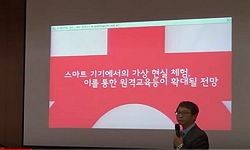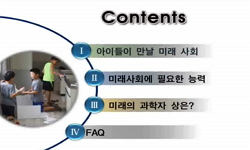본 연구에서는 중국조선족 무용수업의 교수활동 사례분석에서 교수활동을 총체적이고 다각적으로 분석하는데 있다. 이와 같은 연구목적을 달성하기 위하여 중국 중앙민족대학 무용학원 조...
http://chineseinput.net/에서 pinyin(병음)방식으로 중국어를 변환할 수 있습니다.
변환된 중국어를 복사하여 사용하시면 됩니다.
- 中文 을 입력하시려면 zhongwen을 입력하시고 space를누르시면됩니다.
- 北京 을 입력하시려면 beijing을 입력하시고 space를 누르시면 됩니다.
부가정보
국문 초록 (Abstract)
이와 같은 연구목적을 달성하기 위하여 중국 중앙민족대학 무용학원 조선족무용교수 한명으로 유목적표집 한 후 조선족무용교수 대상으로 질적 사례연구를 실시하였으며 심층면담, 수업관찰, 문헌자료 그리고 서술적 설문조사 등을 통한 자료를 수집했으며, 자료수집과정 중 발견되는 부족한 부분을 재수집하였다.
중국조선족 무용수업의 교수활동 사례분석을 교육과정, 교수활동으로 구분되었다.
본 연구의 연구방법과 연구과정에서 얻어진 결과를 기반으로 결론을 제시하면 다음과 같다.
첫째: 교육과정에서는 교과내용, 수업내용, 수업운영, 조선족무용 특성으로 구분되었다. 교과내용을 놓고 보면 조선족무용 수업은 필수과목이고 여러 소수민족무용 수업 중 하나이기에 대체로 짧은 시간 내에 조선족 춤의 맛과 풍격을 습득하는 연습과제이므로 한 학기로 함축하여 진행한다.
수업내용은 동정결합의 미묘한 운율의 근원인 ?(뚠),?(천),伸(썬)의 운동규율을 정확히 습득하지 못하면 조선족무용의 정수(精髓)를 상실하게 되므로 ?(뚠),?(천),伸(썬)의 원리를 이용하여 조선족무용 수업을 진행한다. 이 원리를 습득하면 동작과 동작사이 연결을 자연스럽게 해주며, 호흡을 자유자재로 공제할 수 있는 능력을 키우게 되며 동작에 대한 감정처리를 잘 처리해줄 수 있다. 이에 조선족 장단의 특성을 이해하여 각 장단의 성격을 습득함으로서 조선족무용을 깊이 이해하고, 장단을 배제하면 민족의 맛을 전혀 살려낼 수 없다는 점을 명확히 제시해 주고 있다.
수업운영은 90분이라는 수업시간에서 학생들의 춤사위의 정확도와 연결에 중점을 두었고, 동작의 정확성과 아름다움을 모색하려고 자신만의 수업방법인 동선을 바꿔가면서 학생을 관찰하여 수업하며 학생들의 개인차, 수준별 학습방법을 사용하여 각 반의 학생들의 실제정황과 기능에 맞게 수업을 진행한다.
둘째: 교수행동에서는 교수인식, 교수 상호작용, 동기부여, 수업환경으로 구분되었다. 수업의 높은 집중력을 유지하는 반면에 협동적인 학습 부위기를 조성하여 구체적인 교수방법에 대한 제시와 다양한 전략, 개인차에 대한 교육방법의 중요성을 인식하고 수업에서 학생들의 수준차를 감안하고, 도전적인 과제를 제시하여 다양한 방식으로 보충학습의 기회를 제공하고, 학생들의 개인차를 배제하지 말고 교수가 개별적인 피드백을 해주어야 한다.
학생들의 학습능력 개선을 위하여 지도자가 학습을 도와주는 것이고, 효율적인 교수시범을 신체의 움직임을 통하여 학습자의 인지적 영역, 정의적 영역, 행동적 영역을 바람직하게 변화, 발전시켜줘야 함으로 교수시범의 중요성을 인식하고 이를 통한 수업의 효율성 제고에도 관심을 가져야 한다.
수업환경은 조선족무용의 질을 향상하는 효율적 방법은 조선족환경의 분위기를 조성하는 것은 단순히 수업의 환경적인 개선 차원이 아니라 수업내용의 질적인 측면을 향상하려는데 있으며 수업의 효율성, 제고에 적당한 수업분위기를 조성하는 것도 중요한 것이다.
본 연구에서는 중국조선족 무용수업의 교수활동 사례분석에서 교수활동을 총체적이고 다각적으로 분석하는데 있다.
이와 같은 연구목적을 달성하기 위하여 중국 중앙민족대학 무용학원 조선족무용교수 한명으로 유목적표집 한 후 조선족무용교수 대상으로 질적 사례연구를 실시하였으며 심층면담, 수업관찰, 문헌자료 그리고 서술적 설문조사 등을 통한 자료를 수집했으며, 자료수집과정 중 발견되는 부족한 부분을 재수집하였다.
중국조선족 무용수업의 교수활동 사례분석을 교육과정, 교수활동으로 구분되었다.
본 연구의 연구방법과 연구과정에서 얻어진 결과를 기반으로 결론을 제시하면 다음과 같다.
첫째: 교육과정에서는 교과내용, 수업내용, 수업운영, 조선족무용 특성으로 구분되었다. 교과내용을 놓고 보면 조선족무용 수업은 필수과목이고 여러 소수민족무용 수업 중 하나이기에 대체로 짧은 시간 내에 조선족 춤의 맛과 풍격을 습득하는 연습과제이므로 한 학기로 함축하여 진행한다.
수업내용은 동정결합의 미묘한 운율의 근원인 ?(뚠),?(천),伸(썬)의 운동규율을 정확히 습득하지 못하면 조선족무용의 정수(精髓)를 상실하게 되므로 ?(뚠),?(천),伸(썬)의 원리를 이용하여 조선족무용 수업을 진행한다. 이 원리를 습득하면 동작과 동작사이 연결을 자연스럽게 해주며, 호흡을 자유자재로 공제할 수 있는 능력을 키우게 되며 동작에 대한 감정처리를 잘 처리해줄 수 있다. 이에 조선족 장단의 특성을 이해하여 각 장단의 성격을 습득함으로서 조선족무용을 깊이 이해하고, 장단을 배제하면 민족의 맛을 전혀 살려낼 수 없다는 점을 명확히 제시해 주고 있다.
수업운영은 90분이라는 수업시간에서 학생들의 춤사위의 정확도와 연결에 중점을 두었고, 동작의 정확성과 아름다움을 모색하려고 자신만의 수업방법인 동선을 바꿔가면서 학생을 관찰하여 수업하며 학생들의 개인차, 수준별 학습방법을 사용하여 각 반의 학생들의 실제정황과 기능에 맞게 수업을 진행한다.
둘째: 교수행동에서는 교수인식, 교수 상호작용, 동기부여, 수업환경으로 구분되었다. 수업의 높은 집중력을 유지하는 반면에 협동적인 학습 부위기를 조성하여 구체적인 교수방법에 대한 제시와 다양한 전략, 개인차에 대한 교육방법의 중요성을 인식하고 수업에서 학생들의 수준차를 감안하고, 도전적인 과제를 제시하여 다양한 방식으로 보충학습의 기회를 제공하고, 학생들의 개인차를 배제하지 말고 교수가 개별적인 피드백을 해주어야 한다.
학생들의 학습능력 개선을 위하여 지도자가 학습을 도와주는 것이고, 효율적인 교수시범을 신체의 움직임을 통하여 학습자의 인지적 영역, 정의적 영역, 행동적 영역을 바람직하게 변화, 발전시켜줘야 함으로 교수시범의 중요성을 인식하고 이를 통한 수업의 효율성 제고에도 관심을 가져야 한다.
수업환경은 조선족무용의 질을 향상하는 효율적 방법은 조선족환경의 분위기를 조성하는 것은 단순히 수업의 환경적인 개선 차원이 아니라 수업내용의 질적인 측면을 향상하려는데 있으며 수업의 효율성, 제고에 적당한 수업분위기를 조성하는 것도 중요한 것이다.
다국어 초록 (Multilingual Abstract)
The following are the research findings that derived and constructed partially from the research method and process. Firstly, curriculum includes syllabus, teaching content, class room management, and the idiosyncrasy of Chinese Korean dance. Chinese Korean dance course, one of various ethnic group dance courses in dance department of Central University of Nationalities, is compulsory in the curriculum. The length of this course is compressed into one semester to obtain the manner and style of Chinese Korean dance. Apply terms of DUN(?), CHEN(?), and SHEN(伸) to teach Chinese Korean dance as they are the core values of this type of dance. These terms of posture make dance movements coherent, increase ability in controlling breath, and facilitate emotional expression. Understand Chinese Korean dance in depth by mastering the specific rhythm of Chinese Korean dance. Without this rhythm, it is imposable to express the spirit of the culture of Chinese Korean. The 90 minutes long class focuses on the students’correctness and coherency of movements. In order to pursue the correctness and aesthetics of movements, observe the performance of students from different directions and teach with diversified methods according to students’ various levels in abilities.
Secondly, the pedagogy includes teaching cognition, interactions, motivation generalization, and teaching environment. Constitute detailed teaching strategy that promotes students’concentration and cooperative environment in learning. Provide additional learning opportunities by offering challenging tasks and feedback to students with sufficient consideration of personal diversities in abilities. Instructors need to facilitate in advancing students’ learning abilities. The importance of instructors’ demonstrations in enhancing learners’cognitive, theoretic, and motive arenas and increasing the effectiveness of learning should be acknowledged. In teaching environment, providing Chinese Korean cultural context is an effective way to promote the quality of Chinese Korean dance education. It not only improves the teaching environmental condition, but also increases the quality of teaching. Offering adequate contextual circumstances for teaching is also important in improving pedagogical effectiveness.
The aim of this research is to examine the teaching activities in Chinese Korean dance education in comprehensive and diverse ways with the method of case study. In order to achieve this research objective, one Chinese Korean dance professor in Dance ...
The aim of this research is to examine the teaching activities in Chinese Korean dance education in comprehensive and diverse ways with the method of case study. In order to achieve this research objective, one Chinese Korean dance professor in Dance Department of Central University of Nationalities is chosen as the sample for a qualitative case study. Data were collected through in-depth structured interview, observation of teaching activities, and review of literature. This case study of Chinese Korean dance education is divided into two components of curriculum and pedagogy.
The following are the research findings that derived and constructed partially from the research method and process. Firstly, curriculum includes syllabus, teaching content, class room management, and the idiosyncrasy of Chinese Korean dance. Chinese Korean dance course, one of various ethnic group dance courses in dance department of Central University of Nationalities, is compulsory in the curriculum. The length of this course is compressed into one semester to obtain the manner and style of Chinese Korean dance. Apply terms of DUN(?), CHEN(?), and SHEN(伸) to teach Chinese Korean dance as they are the core values of this type of dance. These terms of posture make dance movements coherent, increase ability in controlling breath, and facilitate emotional expression. Understand Chinese Korean dance in depth by mastering the specific rhythm of Chinese Korean dance. Without this rhythm, it is imposable to express the spirit of the culture of Chinese Korean. The 90 minutes long class focuses on the students’correctness and coherency of movements. In order to pursue the correctness and aesthetics of movements, observe the performance of students from different directions and teach with diversified methods according to students’ various levels in abilities.
Secondly, the pedagogy includes teaching cognition, interactions, motivation generalization, and teaching environment. Constitute detailed teaching strategy that promotes students’concentration and cooperative environment in learning. Provide additional learning opportunities by offering challenging tasks and feedback to students with sufficient consideration of personal diversities in abilities. Instructors need to facilitate in advancing students’ learning abilities. The importance of instructors’ demonstrations in enhancing learners’cognitive, theoretic, and motive arenas and increasing the effectiveness of learning should be acknowledged. In teaching environment, providing Chinese Korean cultural context is an effective way to promote the quality of Chinese Korean dance education. It not only improves the teaching environmental condition, but also increases the quality of teaching. Offering adequate contextual circumstances for teaching is also important in improving pedagogical effectiveness.
목차 (Table of Contents)
- Ⅰ. 서론 = 1
- 1. 연구의 필요성 = 1
- 2. 연구의 목적 = 3
- 3. 연구의 제한점 = 3
- 4. 용어의 정의 = 4
- Ⅰ. 서론 = 1
- 1. 연구의 필요성 = 1
- 2. 연구의 목적 = 3
- 3. 연구의 제한점 = 3
- 4. 용어의 정의 = 4
- Ⅱ. 이론적 배경 = 5
- 1. 중국조선족 역사적 배경 = 5
- 2. 중국조선족 무용형성배경 및 특징 = 6
- Ⅲ. 연구방법 = 9
- 1. 연구계획 = 9
- 2. 연구자 및 연구 참여자 이해 = 10
- 3. 자료수집 = 12
- 4. 자료분석 = 17
- 5. 자료의 진실성 = 20
- 6. 연구의 윤리성 = 24
- Ⅳ. 결과 및 논의 = 26
- 1. 교육과정 = 26
- 2. 교수행동 = 35
- Ⅴ. 결론 및 제언 = 45
- 1. 결론 = 45
- 2. 제언 = 47
- 참고문헌 = 48
- 국문초록 = 51
- Abstract = 53












